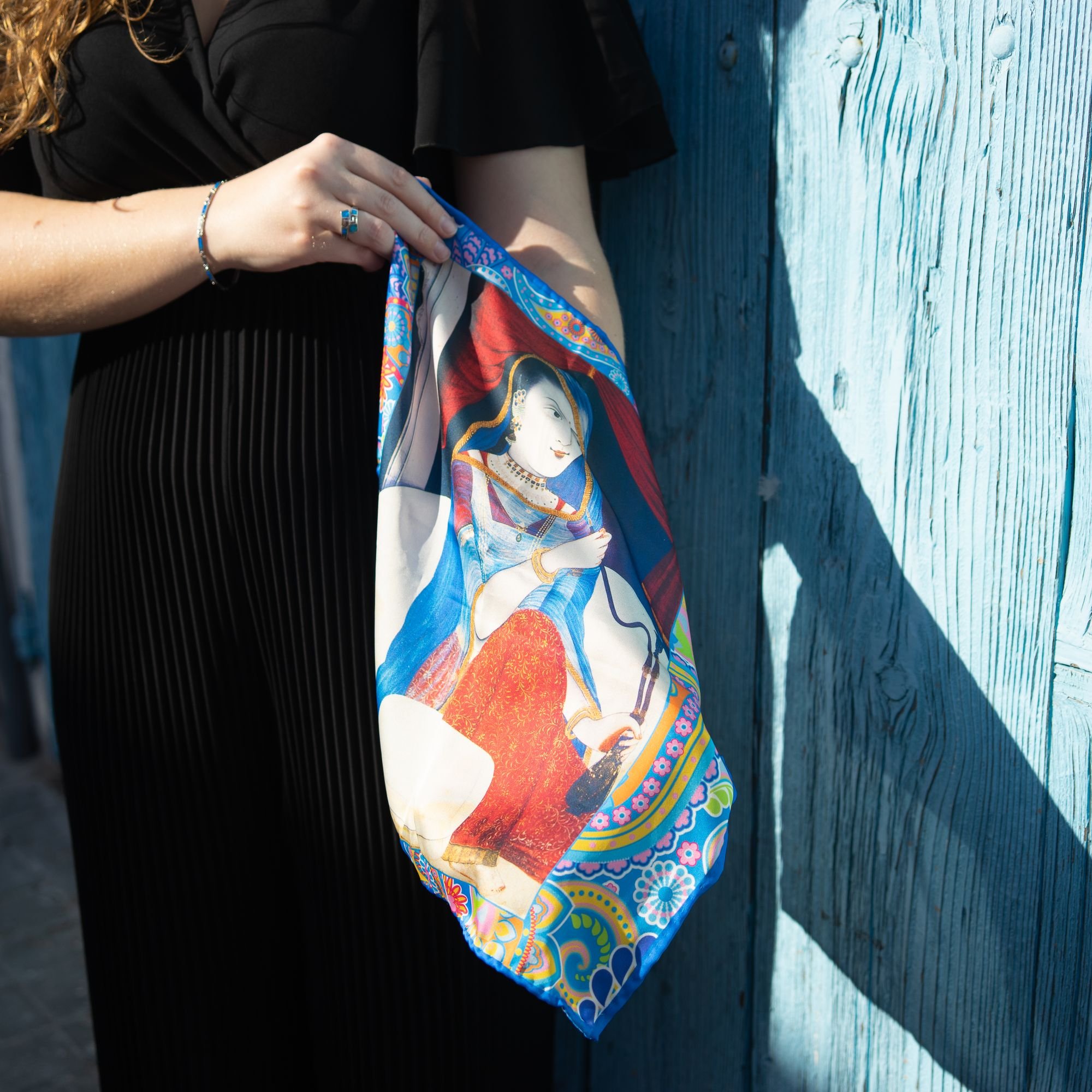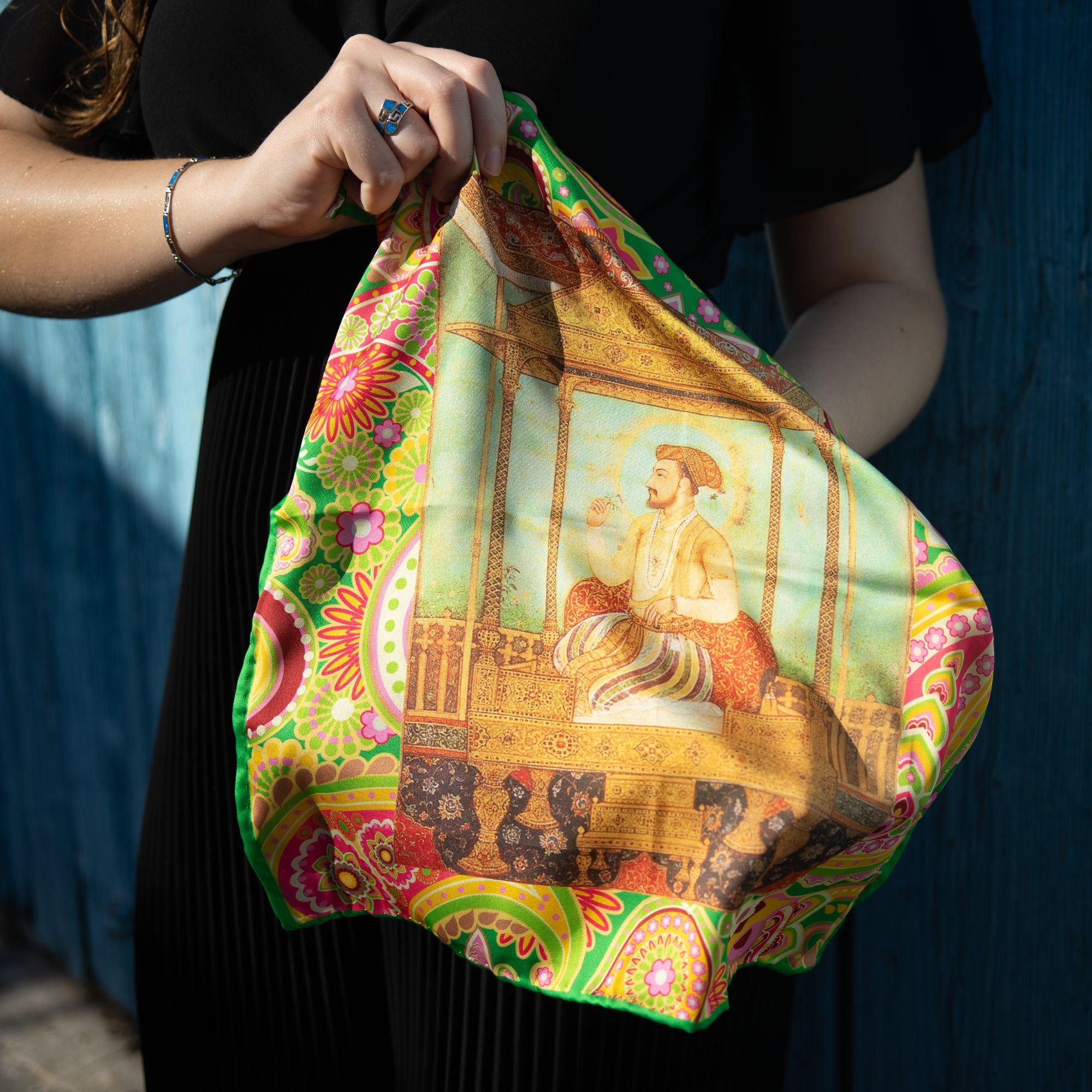 Image 1 of 2
Image 1 of 2

 Image 2 of 2
Image 2 of 2



Portrait of a Courtesan
The serene and distinguished lady of this portrait is a courtesan or tawaif of Lucknow, the opulent capital of Oudh, a Muslim kingdom that flourished in the twilight of the Mughal. Before the British began to displace Indian rulers, the courtesans were an influential female elite entitled to the protection and patronage of the court. With the gradual loss of princely power in the colonial period, patronage was provided by the new urban elite, particularly in the wealthy, leisured capital of Lucknow whose merchants paid princely sums for the pleasure of the company of the courtesans.
Courtesans underwent rigorous training to ensure they would please and entertain their patrons. Many belonged to famous lineages and in the nineteenth century were in the highest tax bracket, with the largest incomes of anyone in Lucknow. While the names of some famous courtesans are known, this anonymous one, resplendent with elaborate earrings and necklaces in the Lucknow style, symbolizes the beauty, confidence and power of the tawaif who were respected members of the community until the advent of the British who initiated the perception that they were disreputable.
The tawaif were recognised not only as preservers and performers of high culture, but also were actively involved in shaping developments in Hindustani music and Kathak dance styles. Much of late nineteenth-century Hindustani music was invented and transformed in their salons to accommodate the tastes of a changing patronage (ibid, 31). For example it was tawaif who popularized the romantic ghazal (a sung version of Urdu poetry) which only became familiar in Lucknow when Urdu poets migrated there from Delhi with the crumbling of the Mughal empire. Similarly when the wealthy connoisseurs of Lucknow, steeped in romantic sensuality, welcomed the thumri style of music with its full expression of the singer's soul, they looked to the professional women-singers (mostly tawaif) to do the singing.
Each of these limited run pocket squares features original artwork digitally printed on the finest 100% silk, complete with hand rolled edges.
To make these works of art more accessible we will be printing a limited run on microfiber as well.
Pricing variations represent choice of fabric.
41cm x 41cm
Digitally printed on 100% Silk or Microfiber
Made in Thailand
The serene and distinguished lady of this portrait is a courtesan or tawaif of Lucknow, the opulent capital of Oudh, a Muslim kingdom that flourished in the twilight of the Mughal. Before the British began to displace Indian rulers, the courtesans were an influential female elite entitled to the protection and patronage of the court. With the gradual loss of princely power in the colonial period, patronage was provided by the new urban elite, particularly in the wealthy, leisured capital of Lucknow whose merchants paid princely sums for the pleasure of the company of the courtesans.
Courtesans underwent rigorous training to ensure they would please and entertain their patrons. Many belonged to famous lineages and in the nineteenth century were in the highest tax bracket, with the largest incomes of anyone in Lucknow. While the names of some famous courtesans are known, this anonymous one, resplendent with elaborate earrings and necklaces in the Lucknow style, symbolizes the beauty, confidence and power of the tawaif who were respected members of the community until the advent of the British who initiated the perception that they were disreputable.
The tawaif were recognised not only as preservers and performers of high culture, but also were actively involved in shaping developments in Hindustani music and Kathak dance styles. Much of late nineteenth-century Hindustani music was invented and transformed in their salons to accommodate the tastes of a changing patronage (ibid, 31). For example it was tawaif who popularized the romantic ghazal (a sung version of Urdu poetry) which only became familiar in Lucknow when Urdu poets migrated there from Delhi with the crumbling of the Mughal empire. Similarly when the wealthy connoisseurs of Lucknow, steeped in romantic sensuality, welcomed the thumri style of music with its full expression of the singer's soul, they looked to the professional women-singers (mostly tawaif) to do the singing.
Each of these limited run pocket squares features original artwork digitally printed on the finest 100% silk, complete with hand rolled edges.
To make these works of art more accessible we will be printing a limited run on microfiber as well.
Pricing variations represent choice of fabric.
41cm x 41cm
Digitally printed on 100% Silk or Microfiber
Made in Thailand







